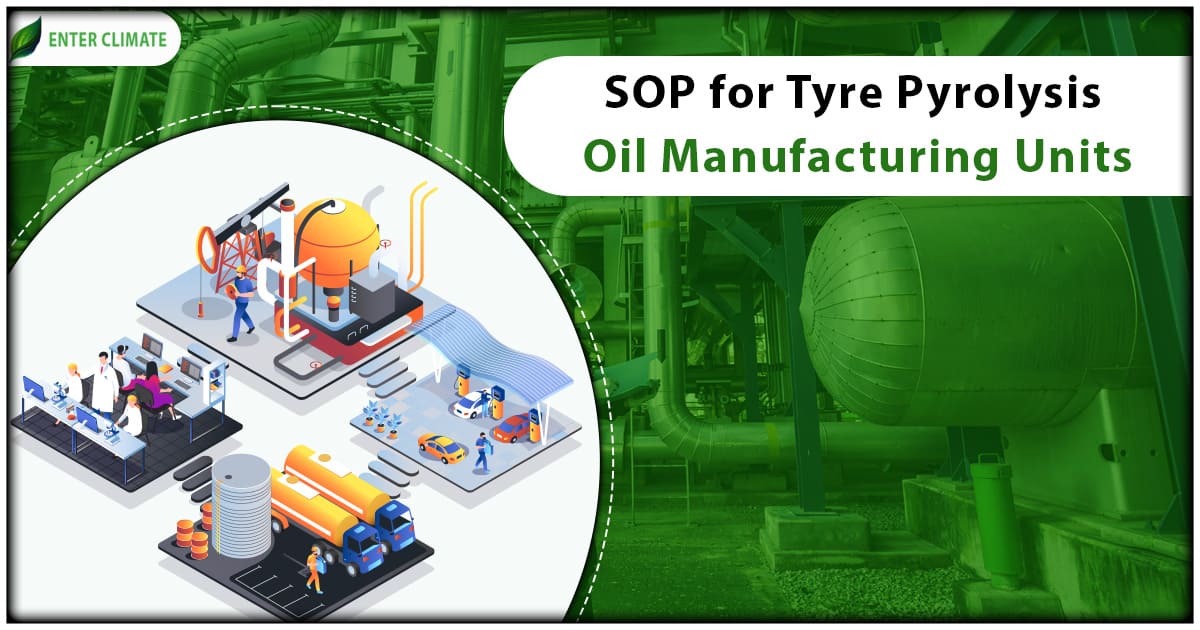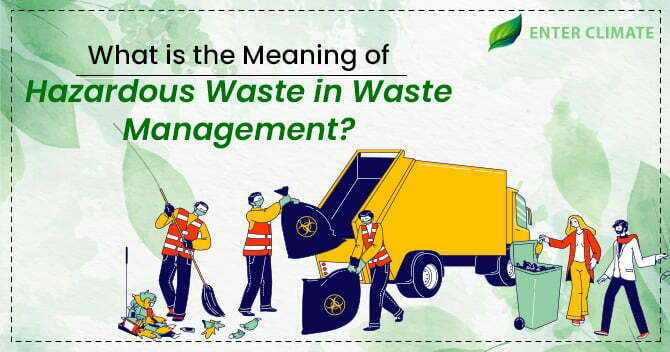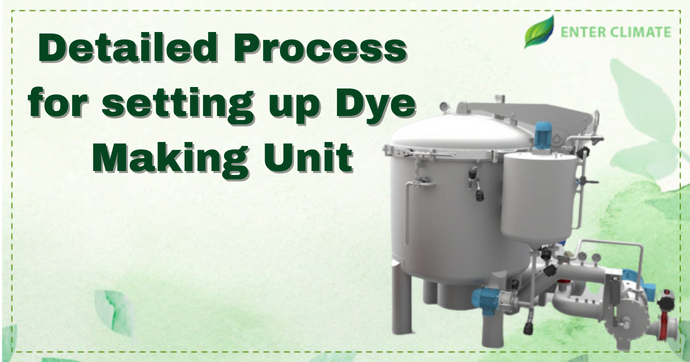SOP for Tyre Pyrolysis Oil Manufacturing Units
 10 Jul, 2023
10 Jul, 2023 
Pyrolysis is a thermal degradation process carried out in the absence of oxygen so that the combustion of the waste does not take place. Pyrolysis of tyres and rubber products produces low-grade oils, pyrolysis gas (pyro-gas), carbon-black-char and steel. The Technical Review Committee, constituted under Hazardous Waste (Management, Handling and Trans-Boundary Movement) Rules, 2008, came up with the Standard operating procedures (SOP) for the production of Tyre Pyrolysis Oil. MoEF&CC then notified the Hazardous and Other Wastes (Management and Transboundary Movement) Amendment Rules, 2022, in which the regime of extended producer responsibility (EPR) for waste tyres was introduced. The SOPs for pyrolysis oil manufacturing were revised and aligned with the 2022 Amendments Rules. By the end of this article, you will be able to understand the SOP applicable for tyre pyrolysis oil manufacturing and the guidelines for designing a pyrolysis oil facility.
SOP and Guidelines on requisite facilities for Tyre Pyrolysis Oil Manufacturing
As we know, most of the tyre pyrolysis[1] units in the country are batch processes producing primarily oils for use as fuel oil in industrial furnaces. The pyro-gas generated from the pyrolysis process are used as fuel in the pyrolysis process. In these plants, the full tyres are fed to the pyrolyser manually, and at the end of the process, the steel wire and carbon are taken out manually.
SOP for Batch process of Tyre Pyrolysis Oil Manufacturing
- The feed to the pyrolysis reactor should be devoid of steel. After removing the steel wire, the tyre can be put either in the form of crumbs or chips (which can be made simply by cutting without going through the shredding process). Further, the feeding arrangement of the rubber crumb to the reactor should be mechanised.
- The initial heating of the reactor should be done by liquid fuel or gas. The flue gas should be released into the environment through a chimney of at least 30 metres.
- After initial heating, during the pyrolysis process, the pyro gas generated within the plant should be used as fuel.
- Excess pyro gas, if any, should be flared through a properly designed flaring system of adequate capacity considering the emergency in which the entire gas may have to be flared. The flaring should be done at a minimum height of 30 metres.
- Adequate instrumentation for measurement and control of temperature and pressure along with safety interlocks in case of an increase of temperature or pressure to cut off heating of the reactor should be provided. Automatic control systems such as Programmed Logic Control (PLC) shall be adopted. It should be ensured that the reactor is under positive pressure all the time.
- In order to control fugitive emissions from the reactor tyre pyrolysis oil manufacturing, proper sealing should be ensured.
- The oil collection from the condensers should be in closed vessels, and storage should be in closed tanks with suitable vents. There should be no manual handling of oil. Transfer of oil should be through pumps. At the end of the pyrolysis process, the reactor has to be cooled before carbon removal. During this process, the reactor should be purged with nitrogen.
- The removal of carbon should be started after the reactor’s temperature has come down to below 50°C.
- The removal of carbon should be done through a mechanised system, and it should be ensured that no spillage occurs during the collection of the carbon in the bags.
Guidelines on the design of Pyrolysis Plant based on Batch Process
- An adequate number of sensors and an alarm system should be provided at suitable locations throughout the plant to detect any leakage of flammable vapours from the system.
- Adequate fire-fighting systems like sprinklers and fire hydrants with necessary pumping systems and water storage should be provided.
- The plot size for the tyre pyrolysis oil manufacturing plant should be adequate for storing crumb or cut tyres, oil and carbon black in addition to the pyrolysis plant and accessories, as well as enough space for movement of fire tender in case of any emergency. The minimum indicative size of a small plant is about 3000 square metres.
- The plant shall possess clearance certificates issued by concerned departments.
- The carbon black and the oil obtained from the process should be supplied only to actual users/processors.
- The wastewater generated in the process from condensers or any scrubbers should be properly treated in an effluent treatment plant, and the sludge generated should be sent to TSDF.
- Oil-containing water condensate should be treated in suitable ETP. Oily sludge/residues should be disposed of through TSDF.
SOP for Continuous Process for Tyre Pyrolysis Oil Manufacturing
The continuous plants operating in the country do not suffer from most environmental and safety problems encountered in the existing batch plants. However, the following facilities must be ensured even for continuous pyrolysis plants.
- The feed to the reactor is in the form of crumbs. During the handling/ transfer of the crumbs, it should be ensured that there should be a suitable system for suction and collection of fugitive fibres.
- The feeding system should have an air-lock arrangement so that no air enters the reactor during feeding.
- The initial heating of the reactor should be done by liquid fuel or gas. The flue gas should be released into the environment through a chimney of at least 30 metres in height. 2.2.4 After initial heating, during the pyrolysis process, the pyro-gas generated within the plant should be used as fuel.
- Excess pyro gas, if any, should be flared through a properly designed flaring system of adequate capacity considering the emergency in which the entire gas may have to be flared. The flaring should be done at a minimum height of 30 metres.
- Adequate instrumentation for measurement and control of temperature and pressure along with safety interlocks in case of an increase of temperature or pressure to cut off heating of the reactor should be provided. Automatic control systems such as Programmed Logic Control (PLC) must be adopted. It should be ensured that the reactor is under positive pressure all the time.
- In order to control fugitive emissions from the reactor during operation, proper sealing should be ensured.
- The oil collection from the condensers should be in closed vessels, and storage should be in closed tanks with suitable vents. There should be no manual handling of oil. Transfer of oil should be through pumps.
- The removal of carbon should be done through a mechanised system, and it should be ensured that no spillage occurs during the collection of the carbon in the bags. Moreover, an air-lock should be provided to ensure no air entry into the reactor.
Guidelines on the design of Pyrolysis Plant based on Continuous Process
- An adequate number of sensors and an alarm system should be provided at suitable locations throughout the plant to detect any leakage of flammable vapours from the system.
- Adequate fire-fighting systems like sprinklers and fire hydrants with necessary pumping systems and water storage should be provided
- The plot size for the tyre pyrolysis oil manufacturing plant should be adequate for storing crumb or cut tyres, oil and carbon black in addition to the pyrolysis plant and accessories, as well as enough space for movement of fire tender in case of any emergency. The minimum indicative size of a small plant is about 3000 square metres.
- The plant shall possess clearance certificates issued by concerned departments.
- The carbon black and the oil obtained from the process should be supplied only to actual users/processors.
- The wastewater generated from tyre pyrolysis oil manufacturing from condensers or any scrubbers should be properly treated in an effluent treatment plant, and the sludge generated should be sent to TSDF.
- Oil-containing water condensate should be treated in suitable ETP. Oily sludge/residues should be disposed of through TSDF.
Licences and Approvals Needed to Start s Pyrolysis Oil Plant
The entrepreneur entering into pyrolysis oil production will need a series of licenses and permits from SPCB/PCC, the CPCB, the Labour Department, State Industrial Department, and the MoEF, such as
Pollution NOC from SPCB/ PCC: In the case of ‘The Pyrolysis Oil plant, the industrial discharge is mainly air polluting. Therefore oil pyrolysis plants are categorised in the red category. The entrepreneurs must apply to the SPCB at the OCCMs portal for CTE and then CTO. The documents needed in this case will include
- Layout plan of the industry
- Information on DG set
- Sheet showing information related to process flow
- Information on the instruments installed for pollution control
- Analysis report relating to effluent, hazardous wastes, solid waste and fuel gases
- Quality Report of air emission analysis
- Consent Fee
- Details of water requirements
- Diagrammatic Representation of the Monitoring Facility
- CGWA NOC (if required).
Hazardous Waste Management Authorisation: The entrepreneur must apply for waste management authorisation and ensure that he follows the SOP and other regulations specified by CPCB for properly recycling and managing tyre waste—the documents.
Additional Licences and approval needed
- Business Registration
- Factory license
- MSME Registration
- Fire NOC
- EPR Registration
EPR for Waste Tyre Recycling
EPR stands for Extended Producers Responsibility, which is a government policy under which producers of certain products with a high potential for causing environmental pollution and waste generation are given vital responsibility for the treatment and disposal of the end-of-life of their product. The EPR authorisation is mandated for producers, importers, manufacturers, brand owners, waste tyre/pneumatic tyre recyclers, and pyrolysis oil manufacturers using waste tyres.
The waste tyre recyclers also require authorisation from SPCB/PCC. For this authorisation, the pyrolysis oil manufacturers must ensure the construction and maintenance of premises and space in accordance with the SOP. The applicant also has to make sure that he has the proper equipment that is authorised in accordance with the SOP or other regulations specified by CPCB for properly recycling and managing tyre waste. Furthermore, the unit/plant also requires an expert and knowledgeable workforce to properly handle waste to lessen the environmental damage caused by them rather than increase it. The authorisation for hazardous waste management is valid for five years. A request for renewal of the authorisation must be made 120 days before the current license expires.
Conclusion
Production of pyrolysis oil from waste leads to a lot of carbon spillage, exposure of workers to fine carbon particles and working in the unconducive environment in the pyrolyser. Some other issues also persist, including the possibility of explosions opening the reactors in the hot conditions, poorly designed flare systems, odour problems etc. Waste tyres are categorised as Hazardous waste due to their irregular chemical composition, which, if not treated scientifically or disposed of properly, poses a severe threat to both environment and human health. The Central Pollution Control Board has issued guidelines for the imposition and collection of environmental compensation, which will be levied on unregistered producers, recyclers and any entity which aids or abets the violation of the provisions of the Amendment Rules. Therefore, It is advisable to follow constructional, operational, and safety guidelines and update all necessary licences and compliances. The assistance of environmental and licencing experts during the setup and licencing stages of a pyrolysis oil manufacturing business goes a long way towards making the unit profitable.
FAQs
Yes, Tyre pyrolysis plant can be setup in India subject to the Indian government regulations on pyrolysis process and the proper handling and disposal of waste from the unit.
Although performing pyrolysis on imported tyre is not allowed in India, all domestically generated waste tyres can be used for the purpose. If the waste tyres are imported, conducting pyrolysis on such tyres is banned as per the 2022 amendment to the HWM Rules.
Concentration of heavy metals in tyre pyrolysis oils and chars is very low which allows their eco- friendly usage. Also, the presence of valuable chemicals such as toluene, limonene and xylene, also enhances the profitability of the process as well as saving natural resources.
There are four main products of tire pyrolysis i.e. fuel oil (pyrolysis oil), carbon char, steel wire and gas.
The cost of starting a tyre pyrolysis plant varies according to the types of materials you want to deal with, raw materials and products. However,for a small-scale pyrolysis plant, one may need thirty to fifty lakhs of capital investment.
Pyrolysis oil is formed from waste/ old tyre, thereby converting itunusable tyres into pyrolysis oil through heating it in the absence of air.
Read our Article: How To Start An Essential Oil Manufacturing Business?













